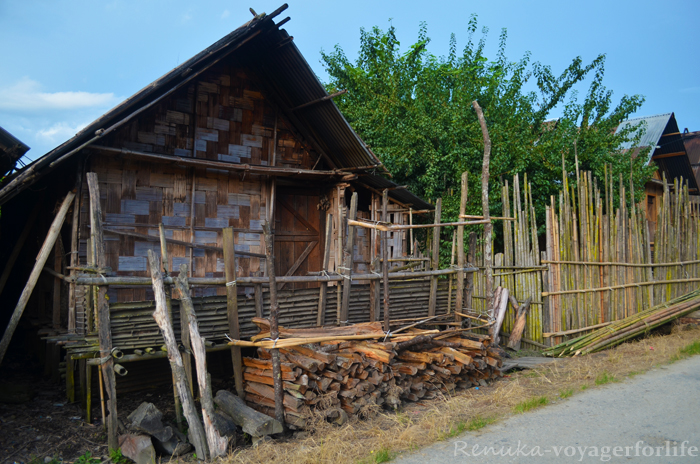Tallo (a chap from ‘Hong’ village) introduced the Apatani world to me. He also taught me a few Apatani pleasantries like ayo siido lo (how are you), aya pa ato (welcome) and paya aro pacho (thank you). He admitted (amusingly) to me that though he was an Apatani guy, he wasn’t aware that these villages are renowned to be the most organised villages in Asia.
Also, the Apatani tribe is admired for its nature conservation and exceptional productivity, and UNESCO has proposed the Apatani region to be the world heritage site.
In this post, I’m going to take you to another charming village named ‘Hija’. Although all Apatani villages are quite similar to each other, there are subtle variations for you to notice.
 |
| The iconic nose-plugs – the lady told me that she wore them since birth. |
|
I was fortunate to visit a Hija house. This ‘nose-plugged’ old woman was a delight for my lens. I quickly got my camera ready, while Tallo requested her for a photograph. Thankfully, she obliged. I also asked her if those nose-plugs bothered her. To which she replied shyly, “I am wearing them since birth.” The cute woman wanted something to eat in exchange of a photo. I wanted to give her money, but she refused.
|
| An Apatani man in action – Bamboo sticks being cut at a ‘Hija’ home. |
Bamboo seemed to be an integral part of the Apatani world. I guess every house had a stock of bamboo. I was educated by Tallo that there were different kinds of wild bamboo found in the surrounding hills. However, the Apatanis typically like to grow bije – Japanese timber bamboo, which is reliable even during cold winters. Bijeand Pinus wallichiana (The blue Pine) are exclusively grown in the Apatani region and nowhere else.
 |
| These houses are ancient, yet they are sturdy. |
 |
| Wooden houses look so charming. |
 |
| A nice photo bomb – This young chap jumped into my frame! |
 |
| A duck-party? |
 |
| The little elements of Hija village |
 |
| Traditional grinders |
 |
| Village traditions – Most houses have this egg-shell thing in the front yard, which is meant to guard against the evil. |
|
The Apatani tribe is extremely particular about their crops. They perform seasonal prayers and ceremonies to protect their produce. The rituals go on for days, and no villager is allowed to step out of the village till they are over.
|
| It’s wood all over the place! |
 |
| A ‘Hija’ village front yard looks like this |
 |
| A friendly ‘Hija’ woman with her kid. |
|
I realized that the Apatani folks were quite reserved. They seemed to be unruffled by the world outside. They apparently don’t like to be photographed. I had to cajole them a little bit to be able to snap their photos.
|
| Ziro’s veggie market – the red chillies are a hot favorite of the locals. |
I liked the fact that the Apatanis grew a lot of veggies. Although they eat a lot of meat, they include tons of greens in their meals. The local market that I visited in Ziro looked gorgeous with red chillies and lots of leafy veggies.
 |
| The locals seem to relish quite a lot of greens. |
 |
| A glimpse of the colorful veggie and fruit market in Ziro |
Has the ‘Apatani’ world intrigued you?
If you enjoyed this post, you can –
Subscribe to receive ‘new post’ updates through Email.
